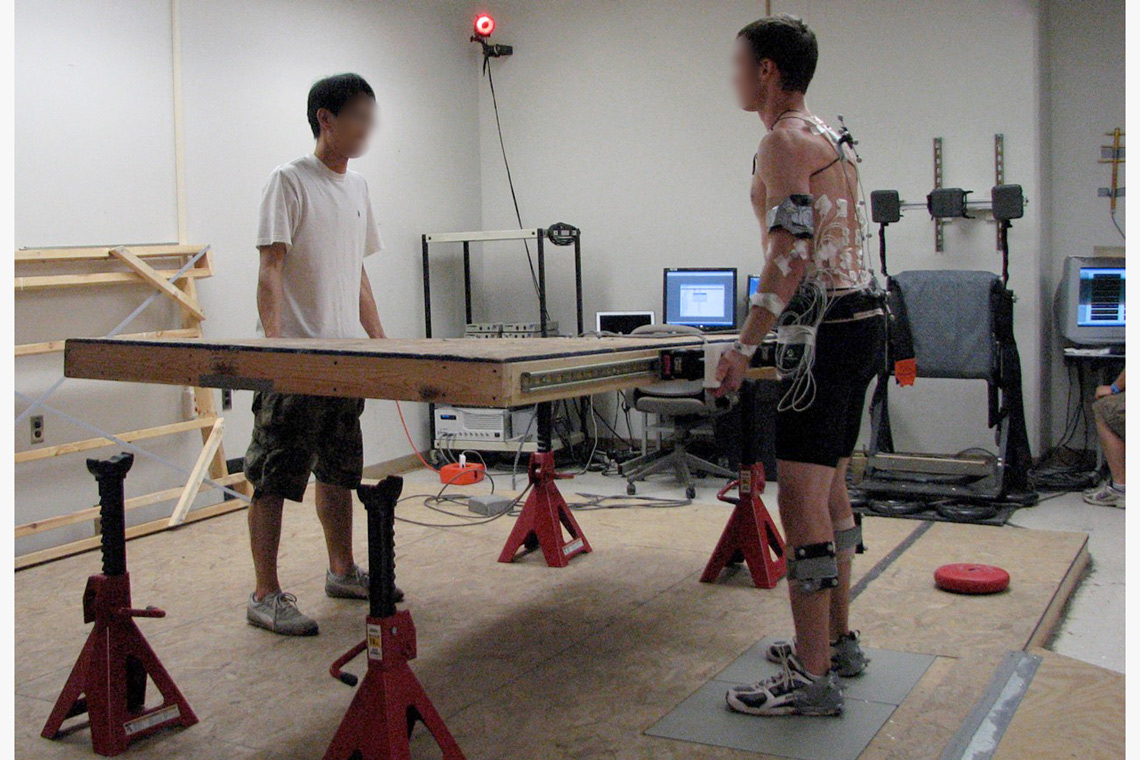A Decision Support System for Ergonomic Construction Design: Phase II
Construction workers and the decision support system software: (left 2 images) Workers prepares to move a panel in photo and program, and (right 2 images) Workers installing the panel.

Goals & Objectives
Work-related musculoskeletal disorders (WMSDs) remain prevalent among residential construction workers. Premanufacturing (or industrialization) is a contemporary trend in this sector, one important aspect of which is the use of panelized walls that are generated by a designer. While this approach provides increased efficiencies, centralization of design provides an opportunity to promote ergonomics in the design process and is critical given the physical demands involved in building with panels. We are developing decision support system (DSS) for panelized design and construction. The DSS facilitates a more proactive approach to ergonomics in panelized construction, consistent with the philosophy of prevention through design (PtD).
A primary advantage in our approach is the inclusion of both ergonomics and productivity as fundamental components that are both improved. As such, it addresses the need to support the economic and/or business case for PtD, specifically by providing information relevant to necessary financial considerations in decision-making and an understanding of the financial implications of PtD.
Lab-based task reactions of manual tasks involved in panelized construction: A participant (right) with sensors is moving a panelized wall with an experimenter (left) in the lab.

Approach & Activities
Currently we are working on three specific aims that will be met through three studies, each involving combinations of interviews with target users and workers, software development, and data collection/experiments conducted both in the lab and field. The first aim is to improve and refine the DSS. The second aim is to facilitate DSS implementation (or transfer) by adapting the system to user needs, determining the effects on the panel manufacturer, and completing simulation-based assessments of efficacy (i.e., at reducing exposures to risk factors for WMSDs). The third aim is to demonstrate through a field-based study the actual effectiveness of the DSS in terms of reducing risk factor exposures.
PI: Maury Nussbaum
Co-I: John Shewchuk, Michael Agnew
Sponsor:
- National Institute for Occupational Safety and Health (NIOSH)


